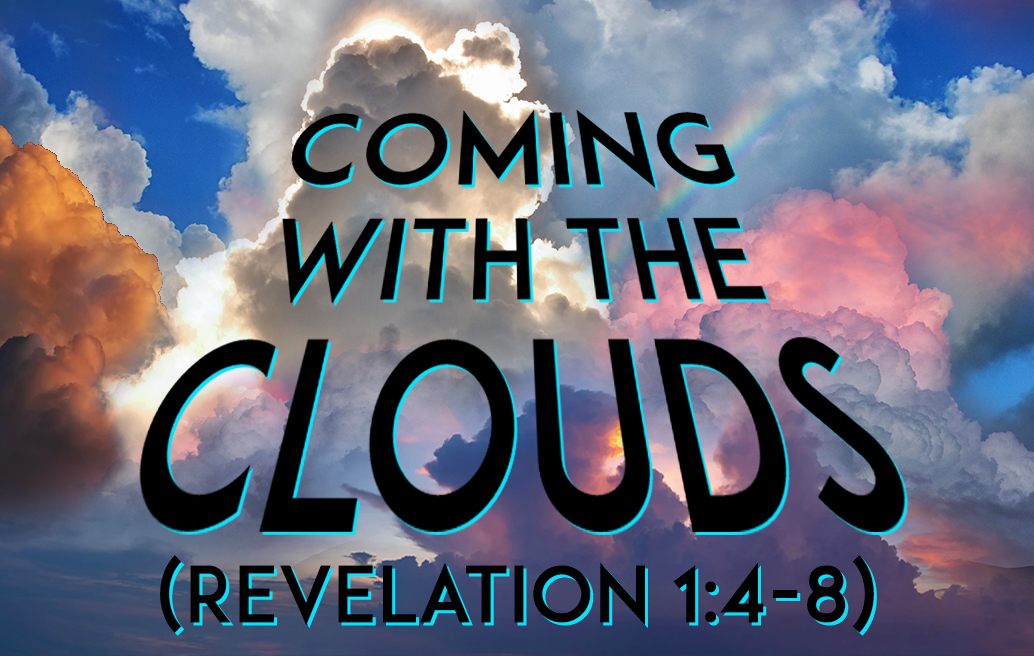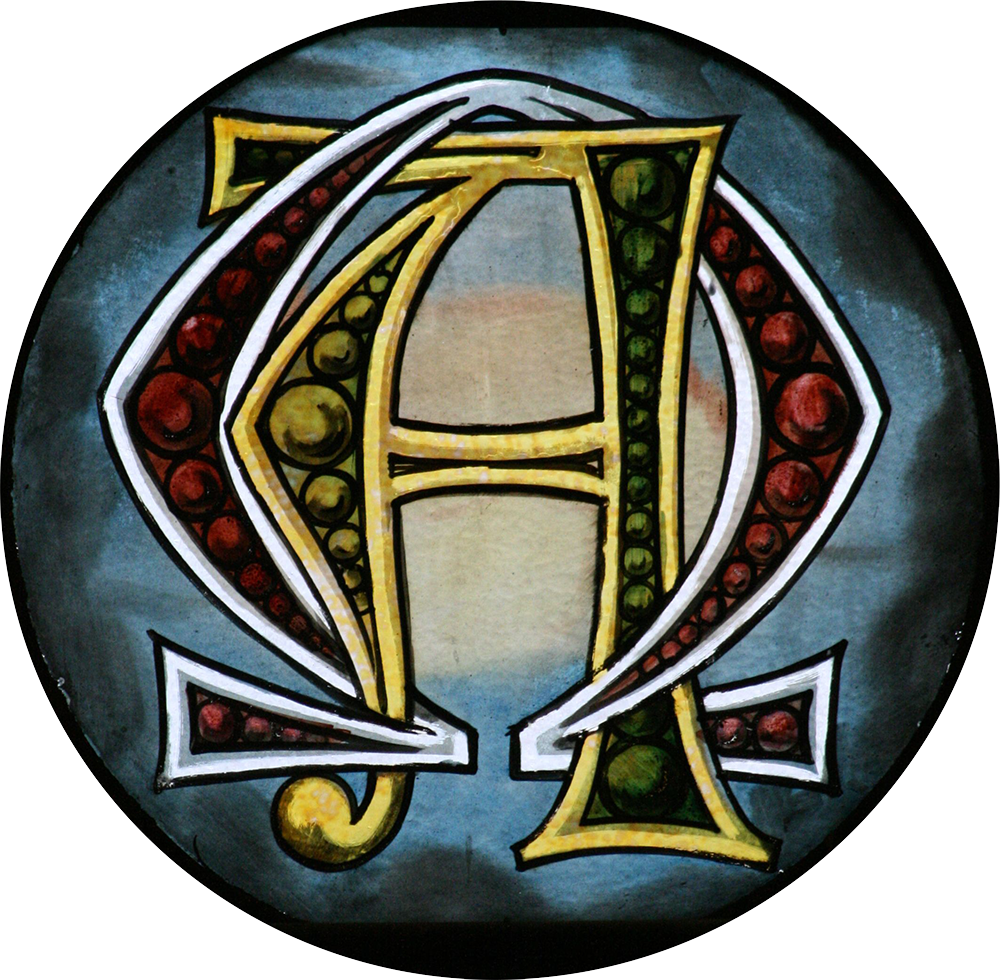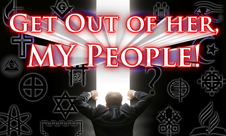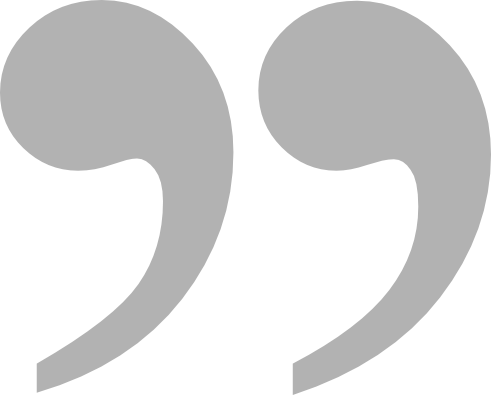|
This is a non-WLC article. When using resources from outside authors, we only publish the content that is 100% in harmony with the Bible and WLC current biblical beliefs. So such articles can be treated as if coming directly from WLC. We have been greatly blessed by the ministry of many servants of Yahuwah. But we do not advise our members to explore other works by these authors. Such works, we have excluded from publications because they contain errors. Sadly, we have yet to find a ministry that is error-free. If you are shocked by some non-WLC published content [articles/episodes], keep in mind Proverbs 4:18. Our understanding of His truth is evolving, as more light is shed on our pathway. We cherish truth more than life, and seek it wherever it may be found. |

The first three verses of the book of Revelation contain the preface. These verses told us the interpretative grid we must apply to the book to understand it appropriately. (1) This book is the revelation. It is the unveiling of things that were previously concealed. (2) The book is written in symbols. The angel signified the book, and the first three verses point out that these things are seen, not heard. Symbols and signs represent a historical, literal fulfillment. Since the book is written in symbols, we must understand what they represent and avoid being caught up with the symbol itself. (3) The time is near. These are things “that must soon take place.” Therefore, we must look for the message of the book of Revelation to impact its first-century audience directly. (4) The book reveals things to happen shortly to the first-century audience. It does not describe things before when the book was written. It is a book of prophecy speaking of things to come.
First Century Letter Format (1:4-6)
Revelation reveals things to happen shortly to the first-century audience.
|
Verse 4 begins the book, and you will notice it starts in a typical first-century Greco-Roman letter format. The letter's author is John. The letter is written to the seven churches that are in Asia. Recall what we learned from the preface of the book of Revelation. The book is written in symbols. Therefore, we must read the book as written in signs and symbols unless something in the text demands a literal interpretation. Most understand the seven churches symbolically. Each of the seven churches represents a possible condition of any local church. The conditions of the seven churches of Asia are pretty applicable today, and we learn how a local church ought to be and should not be. However, there is a powerful reason as to why we must understand that this letter was written to seven literal churches. The reason is that the churches are named in verse 11 and chapters 2-3. The naming of the churches is the flag in the context that tells us that these are not symbolic seven churches but actual churches in Asia Minor.
The salutation is the next part of a first-century letter. This letter is no different. “Grace to you and peace….” Nearly every letter has a salutation, saying, “Grace and peace.” Paul most often uses this kind of salutation. Yahuwah always gives grace and peace. The same is true in the book of Revelation. The one “who is and who was and who is coming” refers to Yahuwah the Father. We also see this salutation from Yahushua Christ in verse 5. The question is, who are “the seven spirits who are before his throne.” It is essential to note the location of “the seven spirits” in this salutation. “The seven spirits” are sandwiched between Yahuwah the Father and Yahushua Christ. This is the first reason to understand “the seven spirits” as referring to the Holy Spirit. The second reason to understand “the seven spirits” as the Holy Spirit is because every salutation and blessing has a divine source. Salutations are not from created beings but from the divine.
Why is the Holy Spirit called “the seven spirits” in Revelation? The most satisfying answer is connecting the reader to the similar description in Zechariah 4:1-10. The book of Revelation immediately uses images from Old Testament prophecies to show that this book is interacting with those symbols. Revelation uses language found in previous prophecies so that the readers can connect the message of Revelation to the prophecy in the Old Testament. Zechariah 4 will be referred to in Revelation a couple of times, and we will examine Zechariah 4 in more detail at that time. It is enough at this point to observe that the Spirit of Yahuwah has the number seven tied to it in Zechariah 4:2 and 4:10. Seven has the symbolic meaning of perfection.
Seeing Yahushua (1:5)
Yahushua's resurrection proves his authority and proves he is ruling from his throne.
|
John proceeds to give several descriptions of Yahushua. He is called the faithful witness, the firstborn of the dead, and the ruler of the kings on earth. These three descriptions are found in Psalm 89. Psalm 89:37 describes David's Messianic offspring as a faithful witness. In Psalm 89:27, the Messianic offspring of David is defined as the firstborn and the highest of the kings of the earth. All three images reveal Yahushua as the Davidic king who rules on the throne. As the faithful witness, Yahushua’s rule will endure forever as the sun (Psalm 89:36-37). Yahushua is the first fruit of the resurrection. His resurrection proves his authority and proves he is ruling from his throne. The ruler of the kings of the earth shows Yahushua’s absolute power over all rulers, kings, and kingdoms. Revelation refers to Psalm 89 to show the fulfillment of the promises made to David regarding the eternal kingdom. Yahushua is on that throne. Quoted in Psalm 89, Revelation sets up the conflict between the exalted Christ and the earthly rulers. Even more, Yahushua is still in charge and ruling even though other rulers will cause the people of Yahuwah to suffer.
The Work of Christ (1:5-6)
The end of verse 5 and all of verse 6 is a statement of praise and glory to Yahushua for what he has done. Yahushua has loved us. Loving us is the reason that he died. Even during our difficult times and suffering, Yahushua still loves us. He has freed us from our sins by his blood. These benefits are derived through his blood, that is, in his death on the cross. If Yahushua is the king, which the previous verse asserted, then we are citizens in his kingdom. The readers are not citizens of the Roman Empire, not citizens in Judaism, but are citizens in the kingdom of Christ. Yahushua has provided a new family relationship by which all believers have a priestly ministry to Yahuwah. We are subjects in Christ’s kingdom with direct priestly access to Yahuwah.
Coming With the Clouds (1:7)
Verse 7 comes from two places in the scriptures. Daniel 7:13-14 is the most likely reference to which Revelation is alluded.
“I saw in the night visions, and behold, with the clouds of heaven there came one like a son of man, and he came to the Ancient of Days and was presented before him. And to him was given dominion and glory and a kingdom, that all peoples, nations, and languages should serve him; his dominion is an everlasting dominion, which shall not pass away, and his kingdom one that shall not be destroyed. (Daniel 7:13–14 ESV)
Yahushua is enthroned and will come in the clouds of judgment against his enemies.
|
The point in Daniel is the same as the enthronement of Yahushua as the king who has a kingdom. All people are to serve Yahushua. But we cannot miss that the imagery of coming in clouds is a consistent use of judgment. Yahushua is enthroned and will come in the clouds of judgment against his enemies. Notice the following passages that use this language.
Behold, he comes up like clouds; his chariots like the whirlwind; his horses are swifter than eagles— woe to us, for we are ruined! (Jeremiah 4:13 ESV)
For the day is near, the day of Yahuwah is near; it will be a day of clouds, a time of doom for the nations. (Ezekiel 30:3 ESV)
A day of wrath is that day, a day of distress and anguish, a day of ruin and devastation, a day of darkness and gloom, a day of clouds and thick darkness…. (Zephaniah 1:15 ESV)
Then will appear in heaven the sign of the Son of Man, and then all the tribes of the earth will mourn, and they will see the Son of Man coming on the clouds of heaven with power and great glory. (Matthew 24:30 ESV)
Yahushua said to him, “You have said so. But I tell you, from now on you will see the Son of Man seated at the right hand of Power and coming on the clouds of heaven.” (Matthew 26:64 ESV)
These usages show that the phrase “coming in the clouds” is not a sign of the end of the world but a symbol of national judgment. Christ has authority, implying that those against him are worthy of judgment.
“Coming in the clouds” is not a sign of the end of the world but a symbol of national judgment. Christ has authority, implying that those against him are worthy of judgment.
|
The rest of Revelation 1:7 alludes to Zechariah 12:10-13:1. The meaning in Zechariah 12 is very important to understanding what the book of Revelation means. Notice that Zechariah 12:10 says that Yahuwah will pour a spirit of grace and mercy on the Jews. The Jews are mourning because they have pierced the Messiah. The picture is weeping for repentance because they have pierced the Messiah. Yahuwah will pour out mercy and grace so that they can repent. Zechariah 13:1 clarifies that Yahuwah will open a fountain to cleanse them from their sins and uncleanness. When we read the phrase “those who pierced him,” we must understand that the scriptures are pointing to the Jewish nation. They will seek repentance, and Yahuwah will give that opportunity.
Turn to Matthew 24:30 and notice the image from Zechariah 12 is used here also. Notice in Matthew 24:1-3 that Yahushua is discussing the coming judgment against the Jewish nation as seen in the destruction of Jerusalem. Matthew 24:29 reveals that judgment is coming. When the scriptures read, “The sun will be darkened, and the moon will not give its light,” it is a reference to the judgment of a nation. That nation will no longer see the sun, moon, and stars. It will be “lights out” for the nation. Matthew 24:30 sounds just like Zechariah 12:10 and Revelation 1:7. The Jews have pierced the Messiah, and he is coming in the clouds (judgment) with power and great glory. Verse 31 reiterates the message of Zechariah 12:10-14. There will be an opportunity for repentance. Repent before this judgment comes, and you will avoid the coming doom. The elect will be gathered because they are the repentant.
Return to Revelation 1:7. Notice that all the language is the same except for one small phrase. Revelation adds something that Zechariah 12 and Matthew 24 did not have. The added phrase is, “Every eye will see him.” Let’s put all the pieces together now to understand what Revelation 1:7 teaches. “He is coming in the clouds” refers to Christ on the throne ruling in authority, and he is coming in judgment. “Every eye will see him” means no one is excluded from this judgment. Everyone is being brought under Christ’s coming judgment, and I think we would be correct to say that judgment is coming against the Roman Empire as it rebels against the authority of Christ. The Romans are included in this judgment. “Even those who pierced him” refers to the Jewish nation in Zechariah 12 and Matthew 24. So also here in Revelation. The whole world is coming under judgment. The Roman Empire will be judged. But not only will they be judged, but even the Jewish nation. They also will be judged. “And all the tribes of the earth will wail on account of him” is the final phrase. Remember that the mourning in Zechariah 12 was mourning for repentance. The purpose of these judgments is to bring about the repentance of the nations. Christ is seeking for the Jews and Gentiles to repent and become part of the kingdom of Christ.
The call to repentance is a key concept in the Book of Revelation that must not be missed. The book twice points out how the judgments did not bring about the repentance Yahuwah desired.
|
The call to repentance is a key concept in the Book of Revelation that must not be missed. The book twice points out how the judgments did not bring about the repentance Yahuwah desired.
The rest of mankind, who were not killed by these plagues, did not repent of the works of their hands nor give up worshiping demons and idols of gold and silver and bronze and stone and wood, which cannot see or hear or walk, nor did they repent of their murders or their sorceries or their sexual immorality or their thefts. (Revelation 9:20–21 ESV)
They were scorched by the fierce heat, and they cursed the name of Yahuwah who had power over these plagues. They did not repent and give him glory. The fifth angel poured out his bowl on the throne of the beast, and its kingdom was plunged into darkness. People gnawed their tongues in anguish and cursed the God of heaven for their pain and sores. They did not repent of their deeds. (Revelation 16:9–11 ESV)
These pictures set the table for what is coming in the book. Judgments are intended to bring repentance. The repentance does not come as Yahuwah desired. Therefore, the nations must be fully judged for rejecting Yahushua as King of Kings.
The paragraph concludes by describing the Lord Yahuwah as the Alpha and Omega. Alpha is the first letter in the Greek alphabet, and Omega is the last letter in the Greek alphabet. Yahushua is the first and the last, the beginning and the end, and everything in between. Yahushua is ruling. Yahushua is in control. Yahushua maintains control and authority over all earthly powers and forces despite everything. He will accomplish all his will, fulfill all his word, and execute all his judgments.

This is a non-WLC article by Brent Kercheville.
We have taken out from the original article all pagan names and titles of the Father and Son, and have replaced them with the original given names. Furthermore, we have restored in the Scriptures quoted the names of the Father and Son, as they were originally written by the inspired authors of the Bible. -WLC Team








